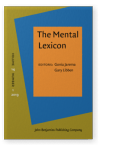Vol. 14:1 (2019) ► pp.68–97
Phonological and grammatical class cohorts in word production
The lexical or sub-lexical loci of facilitation of word production by phonological cueing/priming are debated. We investigate whether phonological cues facilitate word production at the level of lexical selection by manipulating the size of the cohort of word onsets matching the cue. In the framework of lexical facilitation, a phonological cue corresponding to a small number of words should be more effective than a cue corresponding to a larger cohort. However, a lexical locus can clearly be inferred only if the facilitation effect in picture naming is modulated by a specific grammatical lexical cohort and not by the overall word onset cohort. Twenty-seven healthy participants performed an object/noun (Exp1) and an action/verb (Exp2) naming task with cues corresponding to large/small noun/verb onset cohorts. Results revealed that facilitation was modulated by the lexical onset cohort size of the cue in the target grammatical category. These results favour the lexical hypothesis and further suggest a categorical organization of the lexicon.
Article outline
- Experiment 1
- Method
- Participants
- Materials and procedure
- Pre-analyses
- Results and discussion
- Method
- Experiment 2
- Method
- Participants
- Materials
- Procedure and pre-analyses
- Results and discussion
- Method
- General discussion
- Phonological facilitation in object and action naming
- Modulation of facilitation effects by onset cohort size
- Conclusion
- Acknowledgements
- Notes
-
References
